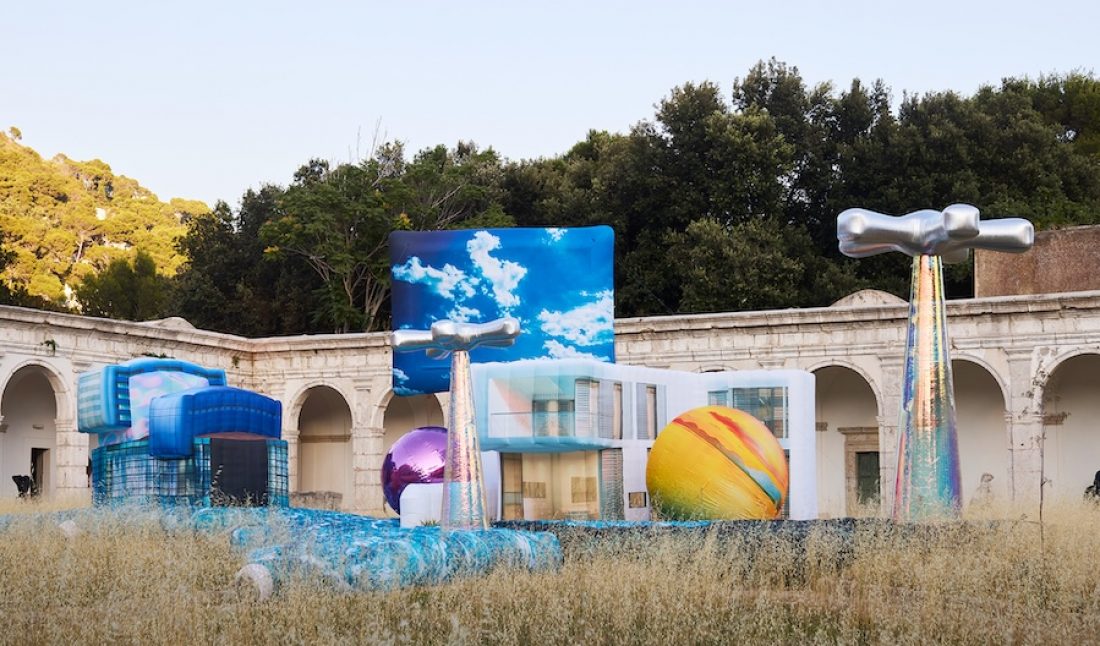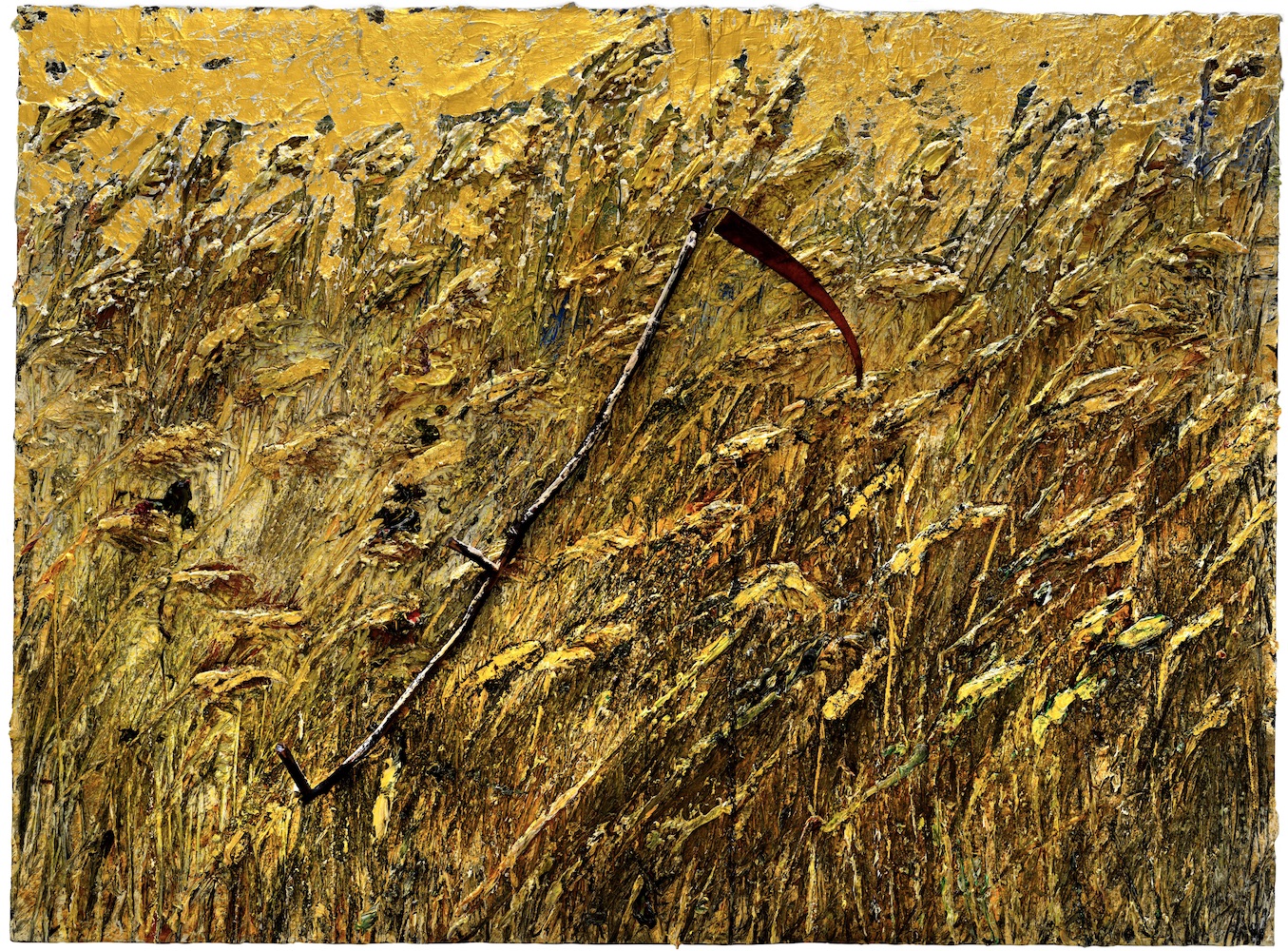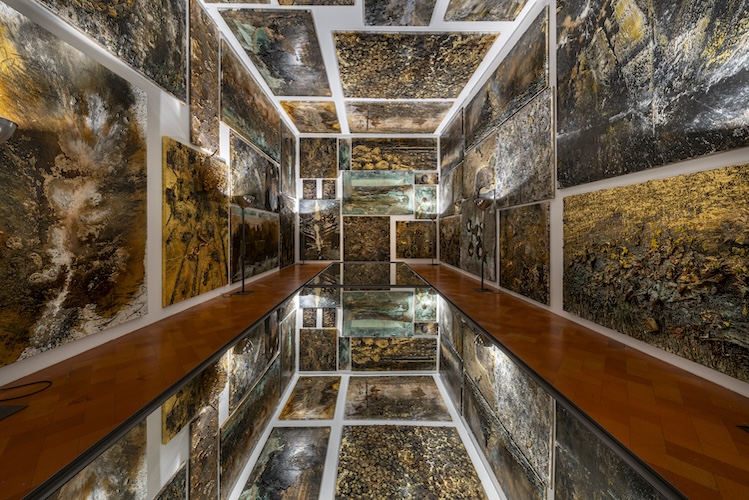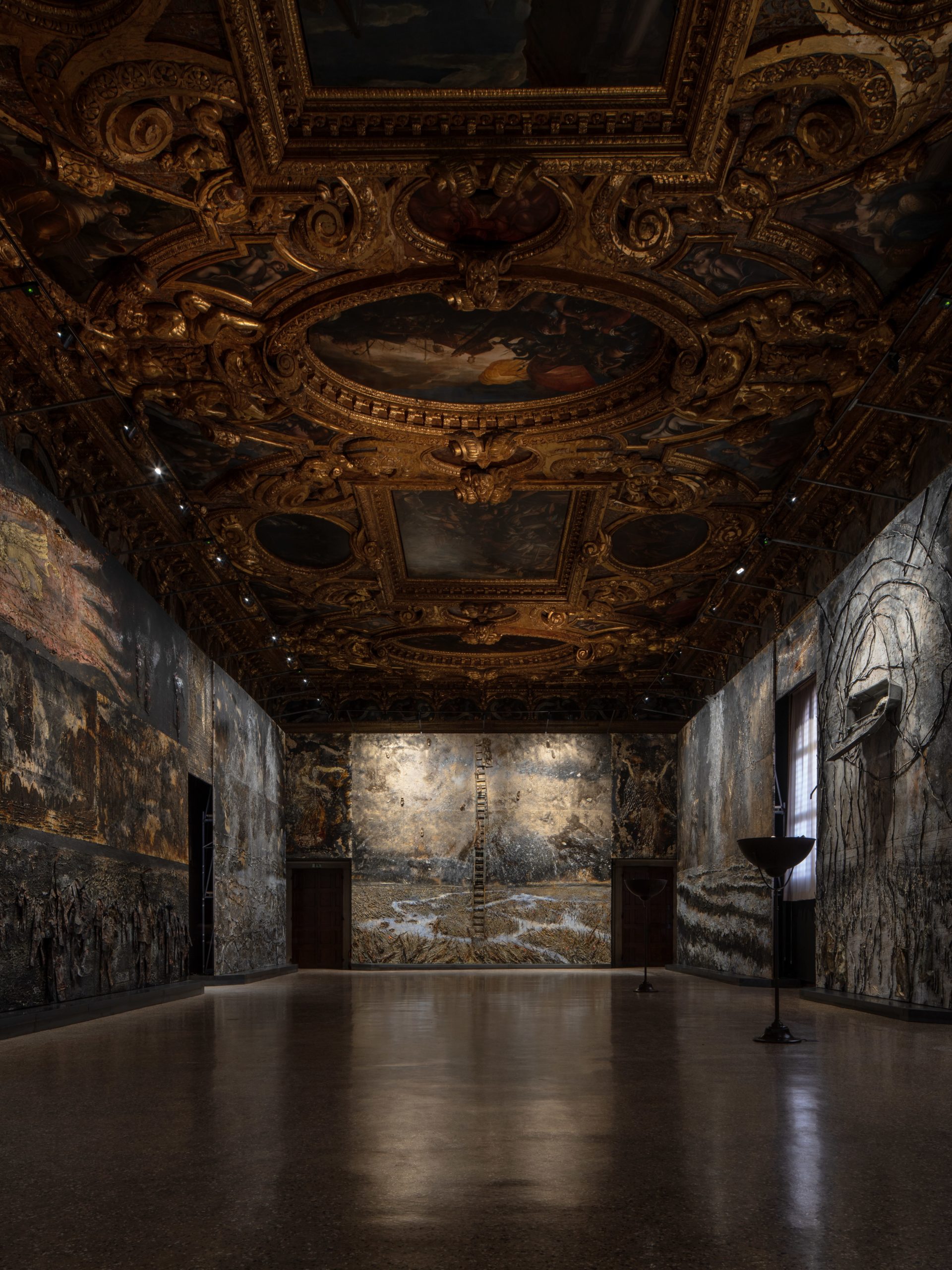High above the cerulean depths of the Mediterranean, where jagged cliffs ascend to meet the sky and the scent of emerald pine trees mingles with the salt-laden air, lies the island of Capri—a place where time seems to stand still, yet where whispers of history linger in every breeze. This jewel of the Tyrrhenian Sea, renowned for its natural beauty and intoxicating allure, has, captivated emperors, artists, and intellectuals alike. Amid this deeply etched history, NOMAD Capri, founded by visionaries Nicolas Bellavance-Lecompte and Giorgio Pace, has carved out a new chapter into the island’s legacy. This art fair has transcended traditional boundaries, transforming Capri each summer into a nexus where contemporary creativity dialogues with its storied past, seamlessly converging art, design, and architecture. Now in its 14th edition, NOMAD redefined the historic Certosa di San Giacomo—Capri’s oldest surviving edifice, built in 1371 as a Carthusian monastery—into a living gallery where the echoes of history meet the invigorating energy of modern innovation.
A Cross-Cultural Journey Spanning Four Continents Unfolds
Nicolas Bellavance-Lecompte, a contemporary design curator and architect based in Milan, has played a pivotal role in shaping NOMAD’s distinctive identity. His journey in the art world began in 2011 when he founded Carwan Gallery, the first collectible design gallery from the Near East, with locations in Beirut and Athens. His career, spanning multiple countries—from the vibrant streets of Beirut to the emerging creative economies of Kigali, and the North African oases of Siwa and Tozeur—has led him to curate exhibitions and projects across four continents. Bellavance-Lecompte’s diverse ventures, including large-scale exhibitions such as “Interlude Rwanda” (featuring 110 new works by local creatives across two museums and an installation on an island), “Carthagisme” (featuring commissions to artisans and artists in Tunisia), and “Fictions” in Canada, reflect his belief that art transcends its creation when it engages with the rich fabric of place, history, and culture. Each project underscores how the essence of a location breathes life into artistic expression, bringing timeless narratives into vivid focus, always rooted in the engagement with local communities of artists and makers.
NOMAD Capri’s 2024 Edition Showcases Milestone Exhibitions
Under Bellavance-Lecompte’s and Giorgio Pace’s guidance, NOMAD Capri has firmly anchored itself as the cornerstone of the island’s arts and cultural calendar, attracting both local and global audiences. The 2024 edition, held within the venerable confines of the Certosa di San Giacomo, showcased esteemed international galleries, including Nilufar and Robilant+Voena. Their exhibitions deftly intertwined artistic expression with historical context, extending beyond the monastery’s ancient cloisters to include special projects like Andy Warhol’s photography at the Grand Hotel Quisisana and Julian Opie’s installations at the Ferragamo store. A significant collateral exhibition of Anselm Kiefer’s works at the Diefenbach Museum marked a historic milestone, as it was the first time another artist’s work had been displayed there.
In our conversation with Nicolas Bellavance-Lecompte, he reflects on the past three dynamic years of NOMAD Capri, delving into the inspirations, challenges, and aspirations that have shaped this extraordinary convergence of art, heritage, and innovation.
 Nicolas Bellavance-Lecompte, the Co-Founder of NOMAD. © De Pasquale + Maffini, © NOMAD.
Nicolas Bellavance-Lecompte, the Co-Founder of NOMAD. © De Pasquale + Maffini, © NOMAD.
WHITEWALL: What initially inspired you to choose Capri, and the Certosa di San Giacomo in particular, as the venue for NOMAD? How does this choice embody the fair’s overarching vision?
NICOLAS BELLAVANCE-LECOMPTE: Capri’s unique blend of natural beauty and cultural heritage made it an ideal new backdrop for NOMAD’s vision of integrating art, design, and architecture in extraordinary settings. The Certosa di San Giacomo, with its rich history dating back to 1371, fosters a dialogue between the past and present, allowing contemporary works to engage with historical narratives—central to NOMAD’s mission. Its spiritual significance and museum program have inspired remarkable installations over the past three years and we engaged with a very interesting international public every edition early July.
WW: Reflecting on the past three years at the Certosa di San Giacomo in Capri, how would you summarise this journey? What have been the most significant milestones and challenges, and how have they shaped the fair during this period?
NB-L: The journey at Certosa di San Giacomo has been transformative. Significant milestones include expanding our international gallery presence and incorporating large-scale installations, such as those by Misha Khan and Filippo Minelli in the outdoor cloister, and the works of Sergio Roger and Wolfgang Laib in the church area. Challenges, such as the logistical constraints of working within a historical site in a car-free town, have driven us to innovate and adapt, ultimately enhancing the uniqueness of each edition in terms of experience and discovery.
WW: How has NOMAD’s programming engaged with Capri’s cultural heritage, and can you highlight any projects that have particularly resonated with the island’s narrative?
NB-L: NOMAD’s programming has deeply engaged with Capri’s cultural fabric by selecting projects that resonate with the island’s historical and natural context. For example, Anselm Kiefer’s exhibition at the Diefenbach Museum was a landmark event, as it was the first time the museum displayed another artist’s work. This engagement bridges the old with the new, reflecting NOMAD’s ethos. We have also been exploring ways to engage with local institutions such as the Hotel Quisisana, where we hosted a special exhibition this year featuring Andy Warhol photographs and a Martin Brule installation, further integrating our program into the territory.
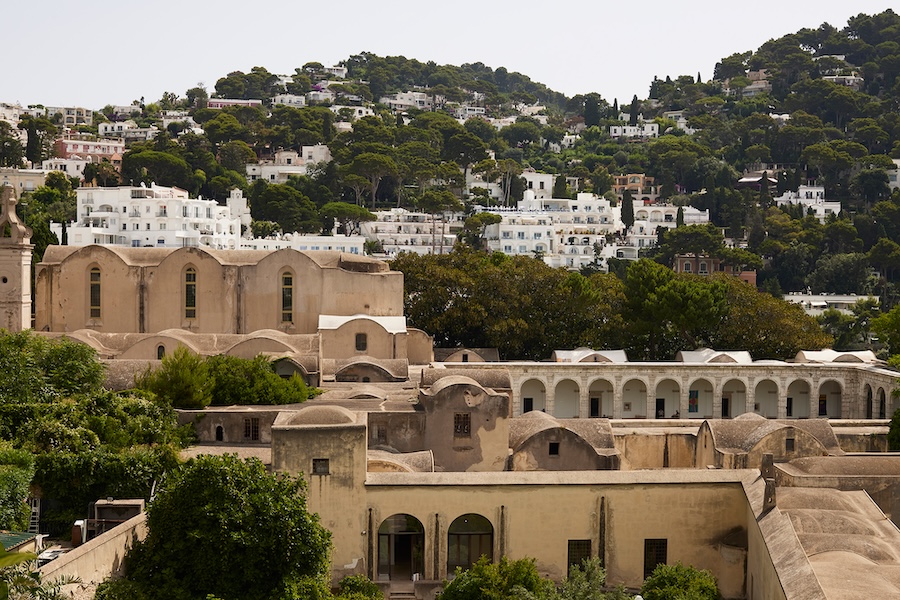 The Certosa di San Giacomo. © De Pasquale+Maffini, © NOMAD.
The Certosa di San Giacomo. © De Pasquale+Maffini, © NOMAD.
“Capri’s unique blend of natural beauty and cultural heritage made it an ideal new backdrop for NOMAD’s vision of integrating art, design, and architecture in extraordinary settings,”
Nicolas Bellavance-Lecompte
Bringing a Global Perspective to Culturally Significant Locations
WW: NOMAD brings a global perspective to culturally significant locations. How has this international approach influenced the curation of the fairs, and which projects had the most impact?
NB-L: The global perspective has enabled us to curate a diverse range of artworks that reflect both local and international narratives. The most impactful projects often involve collaborations that offer fresh interpretations of the historic locations. We strive to bring a global audience, accustomed to high-level exhibitions, to resort destinations, providing a unique experience while maintaining the same quality.
WW: Carwan Gallery’s “Neoneoneo-Classic” series in 2022 bridged historical and modern design at NOMAD. How did this project contribute to the fair’s goal of fostering a dialogue between the ancient and the contemporary?
NB-L: The Neoneoneo-Classic series was pivotal in demonstrating how historical architectural orders and ornamentations can be reimagined through contemporary lenses. By placing these pieces within the ancient premises of the Certosa di San Giacomo, we created a visual and thematic dialogue that encapsulated NOMAD’s mission: to bridge time periods and connect diverse artistic languages.
“The most impactful projects often involve collaborations that offer fresh interpretations of the historic locations,”
Nicolas Bellavance-Lecompte
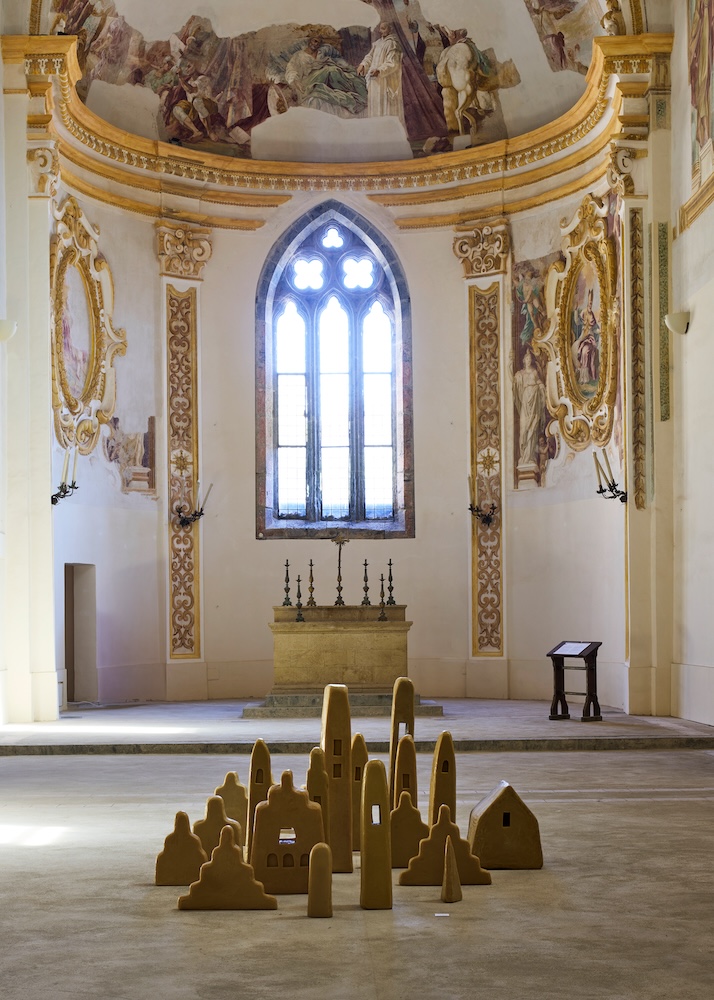 Installation view. Wolfgang Laib, “City of Silence”. © De Pasquale + Maffini, © NOMAD.
Installation view. Wolfgang Laib, “City of Silence”. © De Pasquale + Maffini, © NOMAD.
Spotlighting Nature and Sustainability in Capri
WW: In 2023, themes of nature and sustainability were central, as reflected in the installations by Nilufar Gallery and Friedman Benda. How did these themes resonate within Capri’s context, and what broader message were you aiming to convey?
NB-L: Capri’s natural landscape provided a perfect setting to explore themes of nature and sustainability. These installations not only complemented the island’s environment but also served as a reminder of the importance of preserving natural beauty. The broader message was about harmony and respect for the environment, encouraging viewers to reflect on their own impact on the world. Let’s not forget that Capri’s landscape has inspired humans since antiquity and throughout almost every period of history.
Offering Boundary-Breaking, Site-Specific Projects
WW: The 2024 edition saw NOMAD extend its reach with projects such as Andy Warhol’s photography, Julian Opie’s installations, and Anselm Kiefer’s exhibition. How do these site-specific projects challenge traditional art fair boundaries, and what has been the response from collectors and the broader audience?
NB-L: These site-specific projects have reimagined the concept of an art fair, transforming the entire island into a living canvas. By moving beyond the confines of a single venue, this approach challenges conventional boundaries, making art an immersive, place-based experience. The response has been overwhelmingly positive, with collectors appreciating how these unique settings enhance the depth and narrative of the artworks. Their enthusiasm was evident as many returned to explore the installations multiple times, fostering a deeper connection between the works, the environment, and the exhibitors.
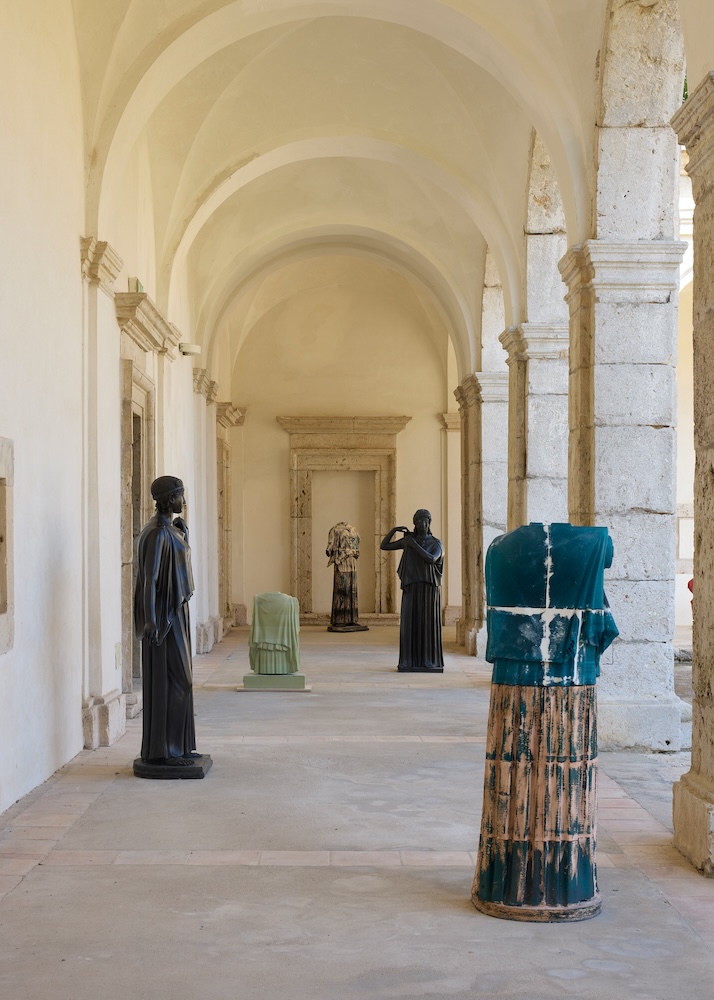 Installation view. Fonderia Nolana del Giudice, “Copia Conforme”. © De Pasquale + Maffini, © NOMAD.
Installation view. Fonderia Nolana del Giudice, “Copia Conforme”. © De Pasquale + Maffini, © NOMAD.
“These site-specific projects have reimagined the concept of an art fair, transforming the entire island into a living canvas,”
Nicolas Bellavance-Lecompte
Engaging with the Local Community and a Global Audience
WW: Over the past three years, NOMAD has engaged both the local community in Capri and a global audience. Could you share any insights that particularly illustrate the impact NOMAD has had on these diverse groups?
NB-L: NOMAD has successfully brought together a diverse audience, creating a cultural bridge between the local community and global art practices. This inclusivity has fostered a sense of community and belonging, allowing the local population to feel part of a global conversation. Feedback from locals often highlights their appreciation for seeing their heritage recontextualized within a contemporary framework. The mayor himself was one of the earliest supporters of NOMAD, as were many hotel owners, who directly observed the cultural tourism we brought to the island for the fair.
Influencing Collector Engagement
WW: Collectors are essential to the art ecosystem. How has NOMAD Capri’s approach of blending historic settings with cutting-edge art influenced collector engagement?
NB-L: By placing contemporary art within historic settings, we offer collectors a unique narrative that enhances both the artwork’s value and its context. This approach not only attracts seasoned collectors seeking distinctive pieces but also engages new collectors drawn to the stories behind the art, fostering more meaningful connections and acquisitions. The significant American presence in Capri during the first week of July brought a fresh crowd of high-net-worth individuals, many of whom engaged with our galleries for the first time.
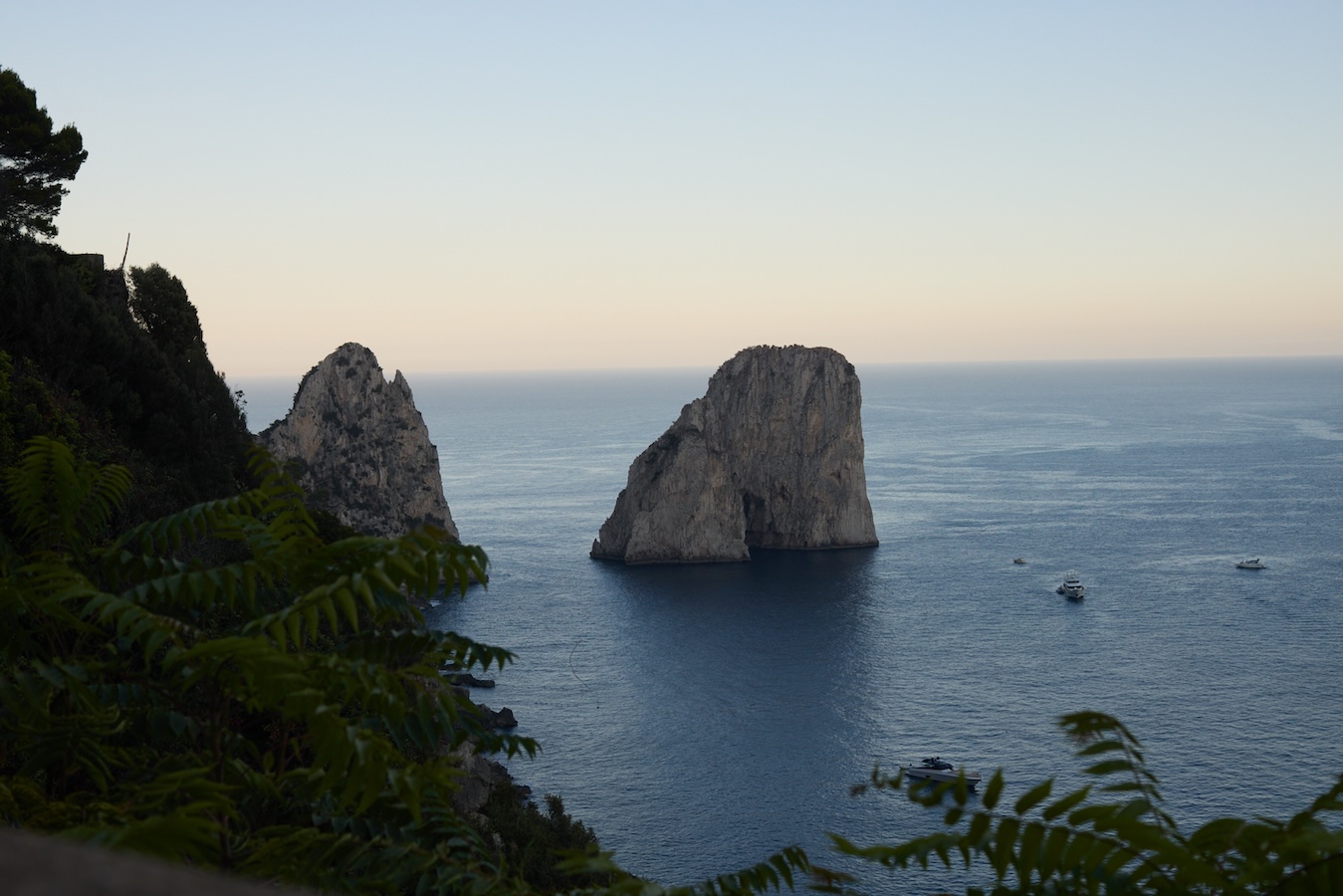 Capri. © De Pasquale + Maffini, © NOMAD.
Capri. © De Pasquale + Maffini, © NOMAD.
“By placing contemporary art within historic settings, we offer collectors a unique narrative that enhances both the artwork’s value and its context,”
Nicolas Bellavance-Lecompte
Looking Forward to Expanded Programming, Integrated Technology, and New Destinations
WW: As NOMAD continues in Capri, what are your aspirations for its future? How do you plan to build on the successes of the past years, and what new directions might NOMAD explore?
NB-L: Looking ahead, I aim to continue pushing the boundaries of what an art fair can be, embracing new themes and collaborations that challenge and inspire. Building on our success and NOMAD’s ephemeral, nomadic nature, we are excited to expand our programming, integrate more technology, and explore new destinations that align with our vision of art, design, and heritage. Whether it’s Asia, the Middle East, or America, the journey will continue as we evolve while staying true to the spirit that defines NOMAD. Stay tuned for the announcement of our next destination in 2025 !
In the meantime, we warmly invite you to join us in St. Moritz from February 20-23, 2025, where we will unveil a special new venue—a former clinic/hospital—designed to spark unexpected experiences.
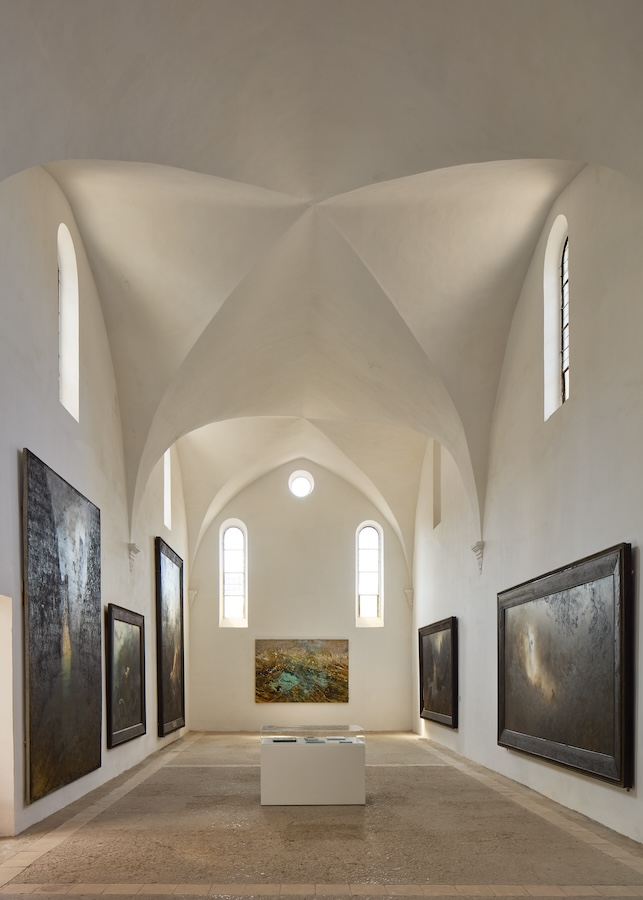 Installation view. Anselm Kiefer’s exhibition, the Diefenbach Museum. © De Pasquale + Maffini, © NOMAD.
Installation view. Anselm Kiefer’s exhibition, the Diefenbach Museum. © De Pasquale + Maffini, © NOMAD.
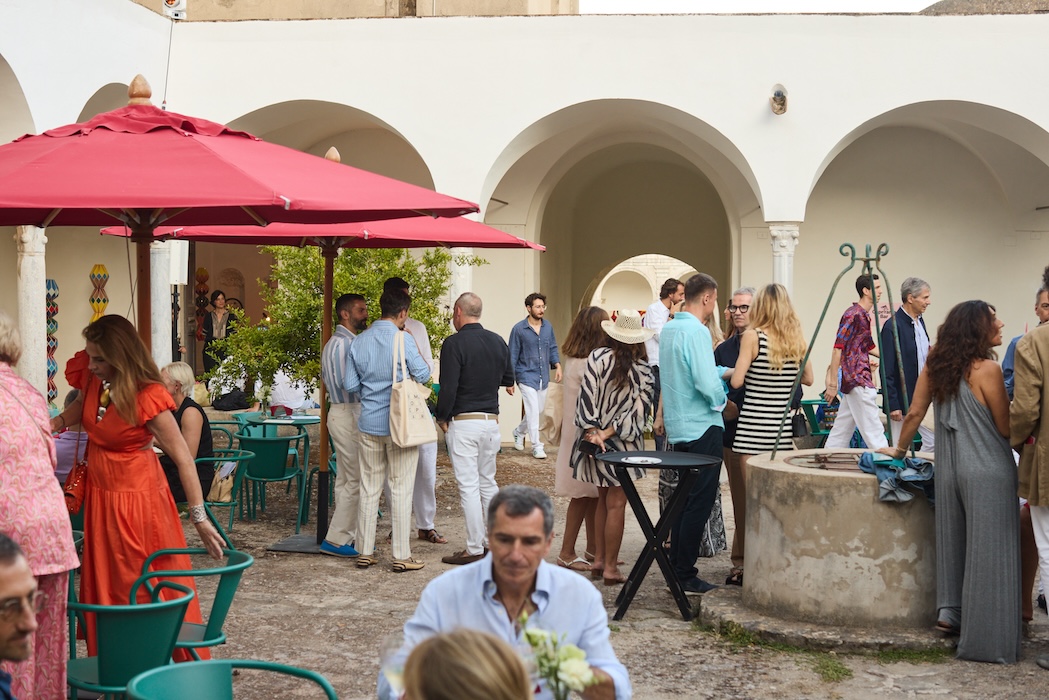 Pop-up bar by Il Capri Hotel © De Pasquale + Maffini, © NOMAD.
Pop-up bar by Il Capri Hotel © De Pasquale + Maffini, © NOMAD.






